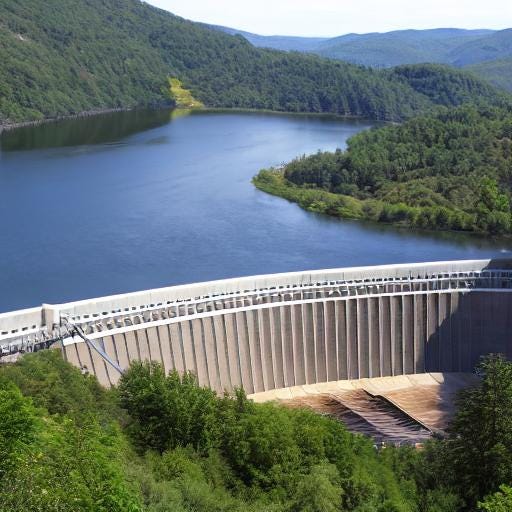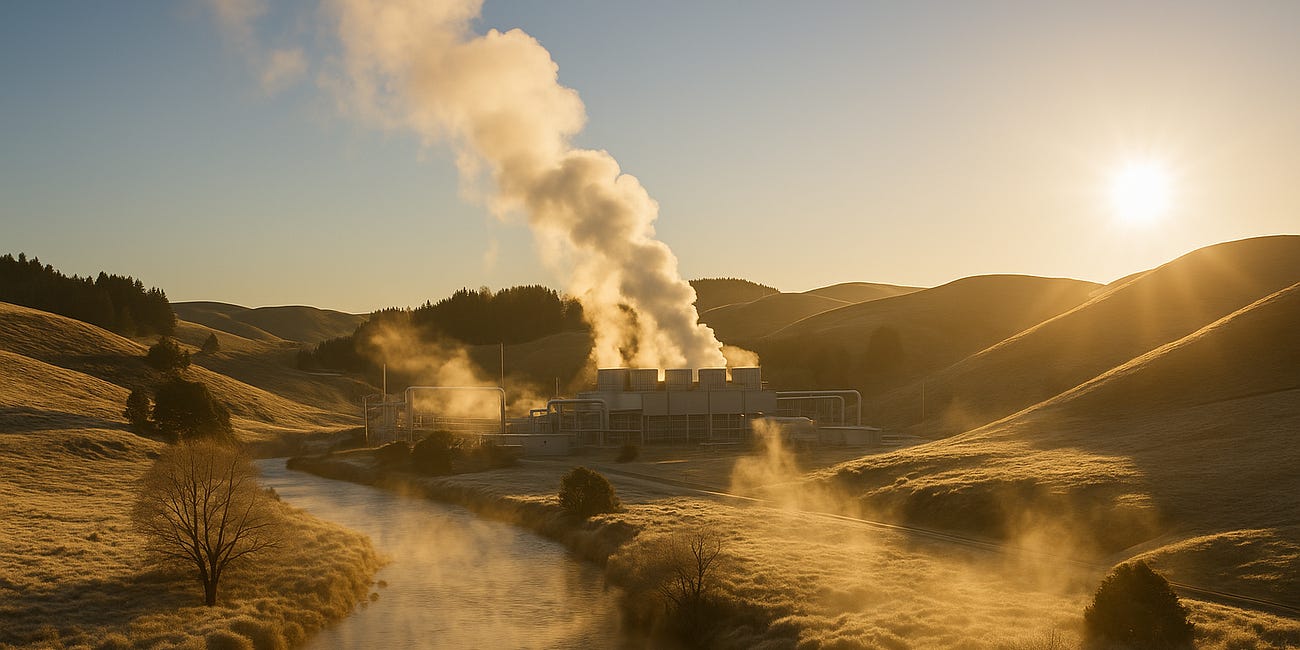Built Out, Priced Out: Why Hydropower’s Future Looks Dim
Despite its legacy status, hydropower now struggles to compete on cost, risk, and scalability. New builds are scarce, expensive, and increasingly unjustifiable in the face of cheaper renewables.
What’s not to like about hydropower? It has many wonderful things going for it. Dispatchable power (when paired with a decent reservoir), minimal CO2 emissions, a free resource and low marginal cost of operation. Many of the world’s first power systems were powered by hydro and it was a fantastic way of electrifying the early industrial economy. Until it wasn’t. In this post, I’ll argue that the era of “big hydro” is largely done and the world should be looking (and is) to alternative forms of renewable energy to further electrify the economy.
Firstly, I can’t help but indulge a personal story. Large hydropower schemes were somewhat formative and a major inspiration for me to become an electrical power engineer. I fondly remember childhood “dam runs” where my family would drive the route from Christchurch through to Twizel, stopping at various iconic power stations such as Benmore, Aviemore, and Waitaki along the way. If one is impressed by the scale of the machines and structures that humanity can build, then one can’t help but be impressed by these structures and huge scale of the industrial works that went into producing them.
Later in my university studies, I had the privilege of working a summer at Manapoūri power station, NZ’s largest hydro station, and second largest power station, built entirely underground in one of the remotest and most beautiful places in the country.
NZ is one of a few countries in the world that has a power system that is dominated by hydropower. We were able to do this because we have many large fast flowing rivers, often with decent gorges, that were amenable to damming. Furthermore, our small population means that our absolute power demand is relatively small. Consequently, NZ enjoys a largely renewable power system that is typically over 50% hydro on an annual energy basis.
What’s not to like about hydropower? Nothing really, and I want to be clear that our existing schemes remain viable and will continue play an important and dominant role in our power system for the foreseeable future.
The problem comes when you think about where the next hydro station will be built. Quite obviously, the rivers and lakes that had the best resource, were the easiest to construct on, and the most cost effective, were the ones that were developed first. Most of the good sites, and many of the average ones, have already been developed.
This means that most of sites that are left have at least one major challenge including:
lower quality resource
challenging construction, i.e difficult terrain or other natural features that increase risks of construction cost blowouts or make the project economics challenging
location on naturally significant land, either for environmental or cultural reasons.
Recently Westpower has been in the news trying to reinvigorate their Waitaha hydro scheme that has been denied a Department of Conservation concession. This project has been in development by Westpower for more than 20 years and it is still not clear that the project will ever get built. All this challenge for a measly 20 MW of power.
Now we get to the cost. Regardless of MW size, hydro projects are “big” civil projects requiring a lot of structural infrastructure, typically including dams, weirs, spillways, penstocks, and other large supporting infrastructure. More often than not, large volumes of earth need to be moved in the creation of the schemes. “Moving dirt” is expensive as those who follow NZ’s various roading projects well know.
A recent article on renewable projects’ costs was particularly damning (pun intended) of cost blowouts for nuclear and hydro projects in particular. It found that on average hydro projects experienced cost over-runs of 36.7%. This compares with wind which averaged 5.2% and solar which actually experienced cost under-runs of 2.2% on average. All this translates into risk adjusted returns for hydro needing to be significantly higher than for wind and solar.
When NZ’s large hydro schemes were first built, the only other really viable form of electrical generation was fossil fuelled, either coal, gas, or oil. Today we have many more options. Onshore wind, which has it’s own consenting and environmental challenges, is now significantly cheaper than new build hydro. Solar is cheaper still. NZ has some of the best wind resource in the world and a decent solar resource with an abundance of available land. Solar is also highly scalable, amenable to rooftop deployment or multi-hundred MW deployment and everything in between. This means it can be “right sized” both for an appropriate grid connection, and also for getting contracts to sell the power.
In NZ we also have an incredible geothermal resource, and it is now consistently providing around 20% of NZ’s electrical energy. Geothermal is very expensive, but has the advantage1 of being baseload power, so it needs no firming capacity, unlike solar and wind.
All of this adds up to the risks of hydro development being very high when you compare it with other renewable generation technologies. It’s hard to see a debt funded project meeting some minimum bars for finance, without the debt provider seeking outsize returns to compensate for the risk. All of this further jeopardizes hydro project economics.
It’s likely therefore that the only hydro projects that get built in the foreseeable future in NZ will be equity funded, either from an existing company’s balance sheet, or another very risk tolerant equity provider. Then of course, one has to ask the question, is there a better use of that equity?
Ultimately, it’s a question of economics and risk, and for green field hydro in NZ, neither of these stack up when compared against other technologies that continue to innovate and improve.
This is potentially also a disadvantage in a modern grid with a large amount of VRE - see my other post below for more info.
Is geothermal doomed to fail?
I’m a fan of geothermal energy. What’s not to like? It’s close to zero marginal cost fuel, 24/7 operation, and minimal CO2 emissions, make it a reliable foil for a power system dominated by wind, solar, and hydro. Some say it’s the new thermal “baseload”. However, my recent thinking, backed up by some evidence from California, has forced me to reconside…
here for discussion on this.




Great article. Dam runs were fun. Especially some of
the sandwiches. Dad enjoyed reading your article as well. Certainly gives us something to think about. It's amazing that those trips may have shaped yours and your brothers career choices.